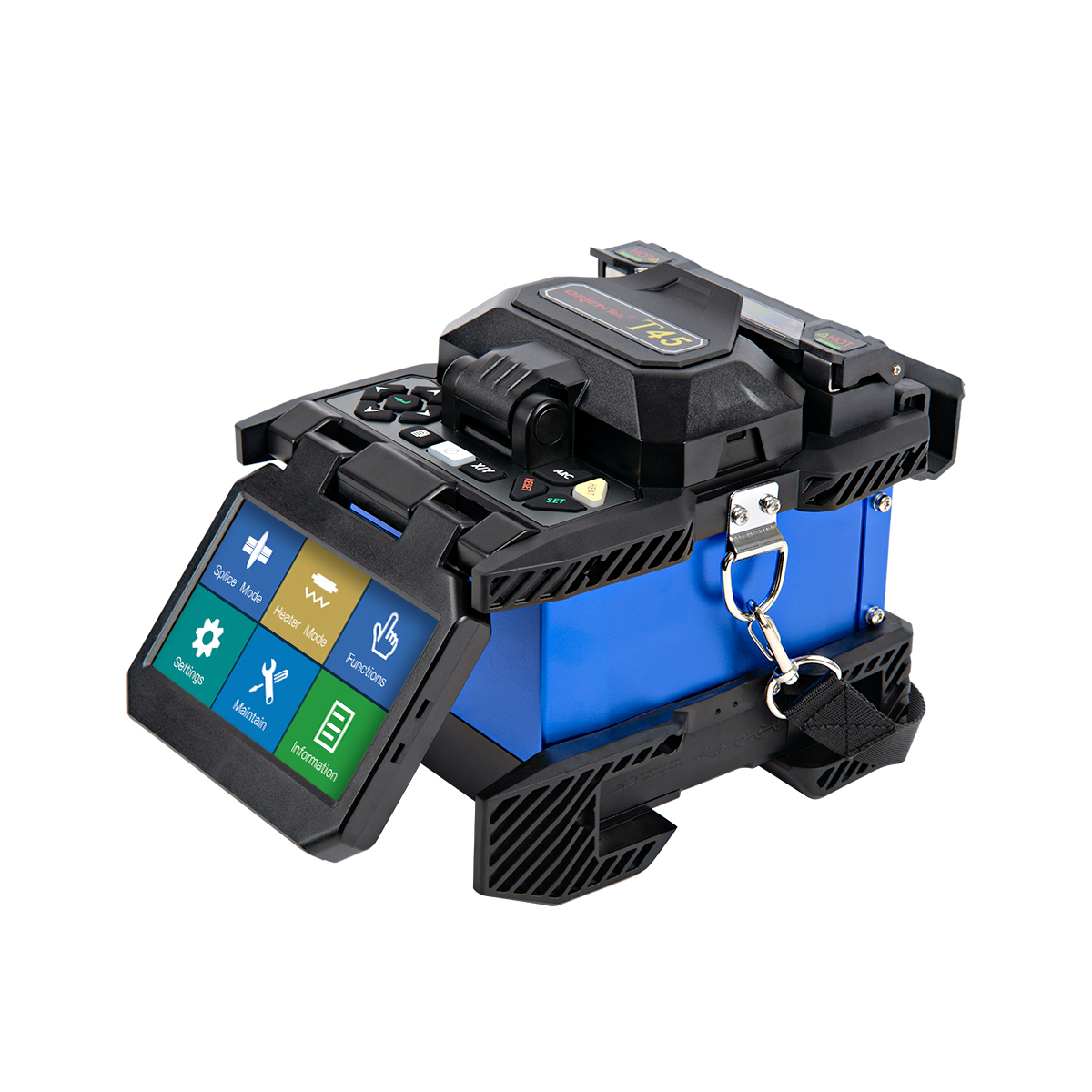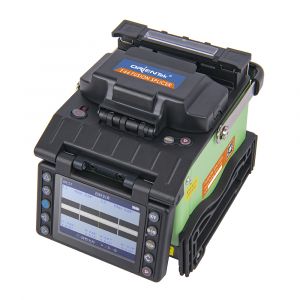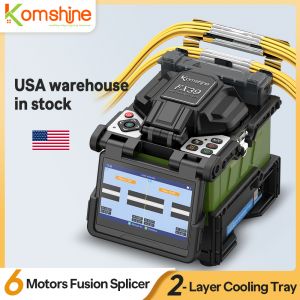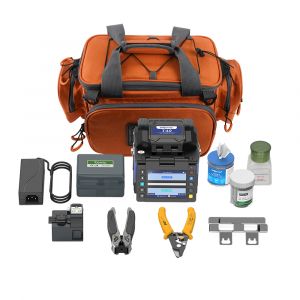:: WHAT IS FUSION SPLICING?
Fiber splicing is the process of permanently joining two fibers together. Unlike fiber connectors, which are designed for easy reconfiguration on cross-connect or patch panels.
There are two types of fiber splicing – mechanical splicing and fusion splicing.
- Mechanical splicing doesn’t physically fuse two optical fibers together, rather two fibers are held butt-to-butt inside a sleeve with some mechanical mechanism. You will get worse insertion loss and back reflection in mechanical splices than in fusion splices (the second type we are introducing below).Mechanical splicing is mostly used for emergency repairs and fiber testing. You can check out some mechanical splice products here.
- The second type splicing is called fusion splicing. In fusion splicing, two fibers are literally welded (fused) together by an electric arc. Fusion splicing is the most widely used method of splicing as it provides for the lowest insertion loss and virtually no back reflection. Fusion splicing provides the most reliable joint between two fibers. Fusion splicing is done by an automatic machine called fusion splicer (fusion splicing machines). We will focus on fusion splicers in this tutorial.
:: WHAT IS A FUSION SPLICER?
As we said above, fusion splicer is the machine used to weld (fuse) two optical fibers together. This process is called fusion splicing. The fiber ends are prepared, cleaved, and placed in alignment fixtures on the fusion splicer. At the press of a button, the fiber ends are heated with electrodes, brought together, and fused.
Fusion splicers are automatic machines that you need to either choose factory recommended settings or you set the splicing parameters yourself. There are five basic steps to fusion splicing with a splicing machine.
- Put on the fusion splice protection sleeve.
- Strip the fiber. Strip back all fiber coatings down to the 125um bare fiber. Clean the bare fiber with 99% isopropyl alcohol.

- Cleave the fiber. The fiber needs to be cleaved with a high precision cleaver. Most splicing machines come with a recommended cleaver. Fiber cleaving is a very important step as the quality of the splice will depend on the quality of the cleave.
- Put the fibers into the fiber holders in the fusion splicer. Press the start button to start the fusion splicing
- Heat shrink the protection sleeve to protect the splicing joint.
:: HOW TO CHOOSE FUSION SPLICERS?
THERE ARE MANY MODELS OF FUSION SPLICING MACHINES AVAILABLE, VARYING IN FEATURES AND CAPABILITY, AND COST. SO YOU SHOULD DO YOUR DUE DILIGENCE BEFORE MAKING A DECISION. THE FOLLOWING SECTION DESCRIBES DIFFERENT FIBER ALIGNMENT TECHNOLOGIES IN SEVERAL TYPES OF FUSION SPLICERS.
CORE ALIGNMENT
Optical fiber core alignment (also called “profile alignment”) fusion splicers use multiple cameras to inspect the two cleaved fibers before fusing and allow for multiple axis movement of the fibers. The two fibers are illuminated from two directions, 90 degrees apart. From the multiple video cameras, the machine recognizes the core of the fibers and aligns them automatically using movable stages.
Core alignment splicers are high-end units allow users to store separate programs or recipes where factors such as splice time and temperature can be highly customized. Such high end fusion splicers magnify and visually display the splice, and use active core-alignment to line up the fibers. Light injection technology and imaging software line up the fiber cores so maximum light passes from one fiber to the other, ensuring minimal splice loss.
This provides for precise fiber alignment, resulting in a typical splice loss of only 0.02dB. This level of precision is required for all single mode fiber applications and also enhances performance of multimode fiber. Ribbon splicers typically use core alignment.
Core alignment fusion splicers have long been the preferred method for CATV installations, backbone networks, specialty fiber applications, and optical components manufacturing largely because of their high accuracy and reliability.The following picture shows a Orientek T45 core alignment fusion splicer.
CLAD ALIGNMENT
More basic fusion splicers employ clad alignments to line up the fibers for splicing. The fibers sit in a holder or V-groove and are lined up “physically”, based on the outer diameter of the fiber’s cladding. These splicing units are at the mercy of the fibers’ glass geometry characteristics and tolerances (Clad Diameter, Clad Non-Circularity, and Core-to-Clad Concentricity). Just because the outer diameters are aligned, doesn’t mean the cores will be perfectly aligned. Such units typically produce higher loss splices and lack the features and flexibility of higher end splicers.
Clad alignment splicers also have multiple cameras but only allow for single axis movement of the fiber. Alignment is aided by a fixed v-groove. The typical loss for this type of splice is 0.05dB. Clad alignment splicers are best suited for multimode applications. The following picture shows a AFL FSM-16S cladding alignment splicing machine.
HAND HELD
A revolution in splicing came about with the introduction of battery powered handheld fusion splicers. These popular devices are compact and portable, yet offer performance on a par with bench top models. The
OrienTek T49 FTTH handheld fusion splicer pictured here features a 14 second splice (high speed mode), built in shrink oven, and other desirable features. Handheld splicers are great for working in confined spaces and aerial applications. They are ideal for FTTx, LAN, backbone and long haul installations.
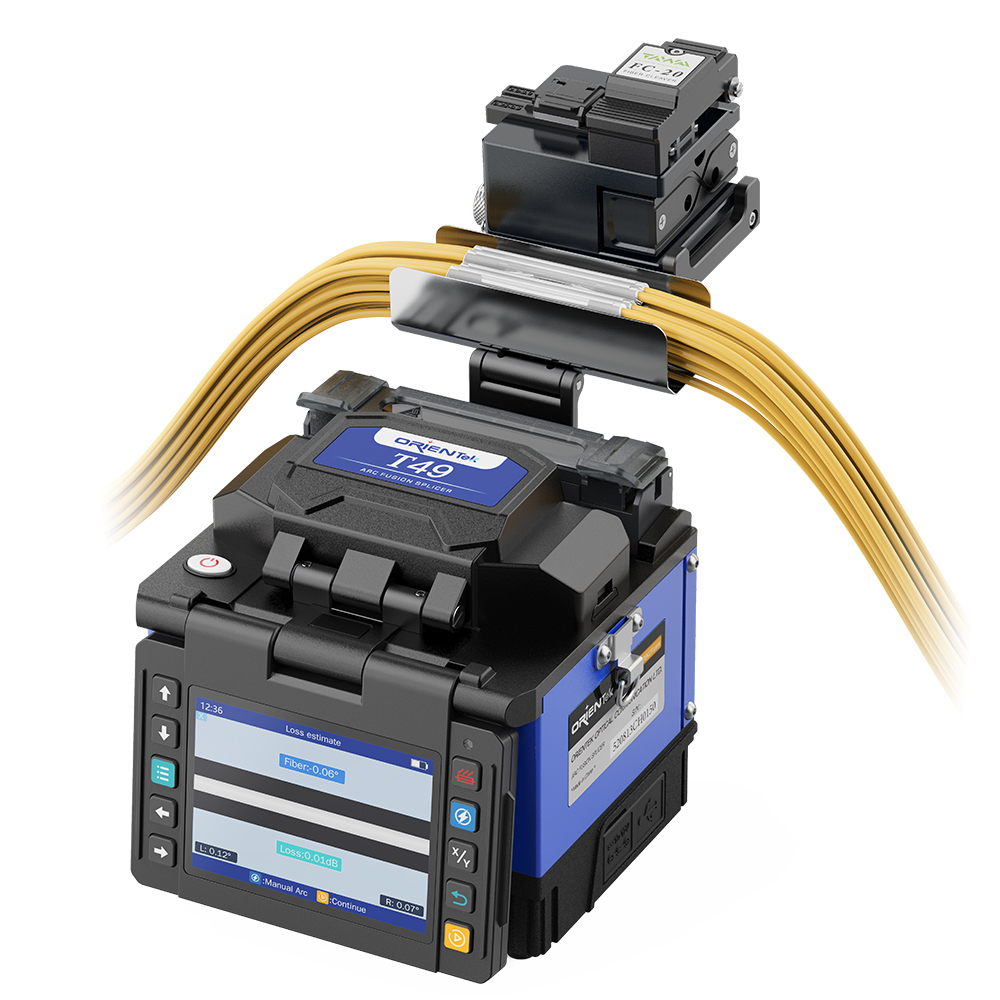
Morde details please send the MODEL name and your purchasing quantity to our email box sales@thefo.com or whatsapp/skype:+86 13625297051










